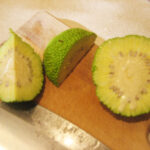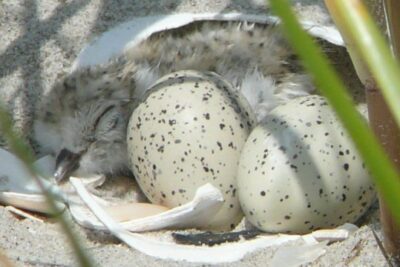
Is it safe for humans to consume succulents?

Succulents have become increasingly popular as houseplants and decorative elements in recent years. Known for their unique shapes and ability to store water in their leaves, succulents have gained a reputation for being low-maintenance and aesthetically pleasing. However, there is still some confusion and concern regarding whether succulents are safe for humans to consume.
We will explore the safety of consuming succulents and provide some insights into the potential risks and benefits. We will discuss the types of succulents that are commonly consumed, the nutritional value they offer, and any potential toxicities or allergic reactions associated with their consumption. Additionally, we will address some common misconceptions and provide guidelines for safely incorporating succulents into your diet, if at all.
- Yes, it is safe for humans to consume certain types of succulents
- Some succulents, like aloe vera, are edible and can be safely consumed by humans
- However, not all succulents are safe to eat
- It is important to research and identify which succulents are safe for consumption before consuming them
- Some succulents may contain toxins or irritants that can be harmful if ingested
- It is recommended to consult a knowledgeable source or expert before consuming succulents
- If unsure, it is best to err on the side of caution and avoid consuming any succulents
- Frequently Asked Questions
Yes, it is safe for humans to consume certain types of succulents
While it is generally not recommended to consume succulents, there are certain types that are safe for human consumption. These edible succulents can be a unique addition to your diet and offer various health benefits.
Edible Succulents
Here are some common edible succulents that you can safely consume:
- Aloe Vera - Known for its medicinal properties, aloe vera can be consumed in the form of juice or gel. It is rich in vitamins, minerals, and antioxidants.
- Purslane - Also known as Portulaca oleracea, purslane is a nutritious succulent that is high in omega-3 fatty acids and vitamin C. It can be added to salads or cooked as a vegetable.
- Prickly Pear Cactus - The fruits, also known as "tunas," of the prickly pear cactus are edible. They are rich in vitamin C and antioxidants. The pads of the cactus, known as "nopales," can also be cooked and consumed.
It is important to note that while these succulents are safe for consumption, it is essential to properly prepare and cook them to avoid any potential risks and ensure their edibility.
Precautions
When consuming edible succulents, it is crucial to take the following precautions:
 Are Plover Eggs Safe to Eat and a Gourmet Delicacy?
Are Plover Eggs Safe to Eat and a Gourmet Delicacy?- Identification - Make sure you correctly identify the succulent before consuming it. Some succulents may look similar but can be toxic.
- Source - Ensure that the succulents you consume are from a trusted source and have not been treated with any harmful chemicals or pesticides.
- Preparation - Properly wash and prepare the succulents before consuming them. Remove any spines, thorns, or toxic parts.
- Quantity - Consume succulents in moderation and do not overindulge. Just like any other food, excessive consumption may lead to digestive issues.
It is always best to consult with a healthcare professional or a plant expert before incorporating any new food into your diet, especially if you have any underlying health conditions or allergies.
While not all succulents are safe for human consumption, there are certain edible succulents that can be enjoyed as part of a healthy diet. By taking the necessary precautions and properly preparing them, you can safely incorporate these unique plants into your meals.
Some succulents, like aloe vera, are edible and can be safely consumed by humans
When it comes to consuming succulents, it's important to note that not all succulents are safe for human consumption. However, there are some succulents, like aloe vera, that are not only safe but also offer various health benefits.
Aloe Vera
Aloe vera is a popular succulent known for its medicinal properties. While the gel extracted from its leaves is commonly used in skincare products, it can also be consumed for its health benefits.
Benefits of consuming aloe vera:
- Improved digestion: Aloe vera contains enzymes that aid in digestion and can help alleviate symptoms of digestive disorders such as acid reflux.
- Boosted immune system: The plant is rich in antioxidants that strengthen the immune system and protect the body against harmful bacteria and viruses.
- Anti-inflammatory properties: Aloe vera has anti-inflammatory properties that can reduce inflammation in the body and help alleviate conditions like arthritis.
- Improved skin health: Consuming aloe vera can promote healthy skin by hydrating it from within and reducing the appearance of blemishes.
It's important to note that while aloe vera gel is safe for consumption, the yellow sap found just beneath the plant's skin, known as latex, should be avoided as it can have laxative effects and may cause gastrointestinal discomfort.
 Are Succulents Safe to Eat? Exploring the Suitability of Consuming Succulent Plants
Are Succulents Safe to Eat? Exploring the Suitability of Consuming Succulent PlantsWhile aloe vera is one of the few succulents that can be safely consumed, it's crucial to exercise caution when considering consuming other types of succulents. Some succulents may contain toxic compounds that can be harmful or even fatal if ingested.
If you're unsure about the safety of consuming a particular succulent, it's best to consult with a medical professional or do thorough research before incorporating it into your diet.
However, not all succulents are safe to eat
While succulents are generally known for their beauty and resilience, it is important to note that not all succulents are safe for human consumption. While some succulents possess certain health benefits, others can be toxic or have adverse effects on our bodies.
Toxic Succulents
There are certain succulents that contain toxic compounds that can be harmful if ingested. These toxic succulents may cause nausea, vomiting, diarrhea, or other gastrointestinal issues. It is crucial to be aware of these toxic succulents and avoid consuming them.
- Agave: While Agave is commonly used to produce tequila and agave syrup, consuming the raw leaves or sap can cause severe digestive discomfort.
- Euphorbia: This succulent contains a milky sap that can cause skin irritation and can be toxic if ingested.
- Kalanchoe: Some species of Kalanchoe contain cardiac glycosides, which can have a toxic effect on the heart when consumed.
- Crassula: Certain species of Crassula, such as the Jade Plant, contain toxic compounds that can cause vomiting and other gastrointestinal issues.
Edible Succulents
On the other hand, there are succulents that are safe for human consumption and even offer certain health benefits. These edible succulents can be incorporated into salads, smoothies, or other culinary creations.
- Aloe Vera: Aloe Vera gel is commonly used in skincare products, but it can also be consumed. It is known for its soothing properties and potential benefits for digestion.
- Prickly Pear Cactus: The pads, or nopales, of the Prickly Pear Cactus are often cooked and used in various dishes. They are rich in vitamins and minerals.
- Purslane: Purslane is a leafy succulent that is often used in salads. It is packed with omega-3 fatty acids and antioxidants.
- Ice Plant: The leaves of the Ice Plant can be consumed and are sometimes used in salads or as a garnish. They have a refreshing, slightly salty taste.
Before consuming any succulent, it is essential to do thorough research, consult reliable sources, and ensure that you have correctly identified the plant. If in doubt, it is always best to err on the side of caution and refrain from consuming any succulent.
 Are Succulents Safe for Rabbits to Eat?
Are Succulents Safe for Rabbits to Eat?Remember, while some succulents can be a delightful addition to your garden or home decor, not all of them are meant for your plate.
It is important to research and identify which succulents are safe for consumption before consuming them
When it comes to incorporating plants into our diets, succulents have gained popularity in recent years. Known for their unique and vibrant appearance, succulents are a type of plant that stores water in their leaves, stems, or roots, allowing them to thrive in arid conditions.
However, before jumping on the succulent-eating trend, it is crucial to research and identify which succulents are safe for consumption. While some succulents offer health benefits and can be enjoyed as part of a balanced diet, others can be toxic and potentially harmful to humans.
The Importance of Research
Before consuming any type of succulent, it is essential to gather information and conduct thorough research. This includes understanding the specific species of succulent, its properties, and whether it is safe for human consumption.
One way to ensure the safety of consuming succulents is to consult reputable sources such as botanical experts or horticulturists. They can provide valuable insights into the edibility and potential risks associated with certain succulents.
Additionally, it is crucial to consider personal factors such as allergies or medical conditions that may affect the body's reaction to specific plants. What might be safe for one person could pose a risk to another.
 The Benefits of Using Coffee Grounds for Succulent Growth and Health
The Benefits of Using Coffee Grounds for Succulent Growth and HealthSafe Succulents for Consumption
While not all succulents are safe for human consumption, there are some species that have been traditionally consumed in certain cultures and are considered safe when prepared correctly.
- Aloe Vera: Aloe vera is a well-known succulent that offers numerous health benefits. It is commonly used in skincare products, but its gel can also be consumed in juices, smoothies, or as a natural remedy for digestive issues.
- Purslane: Purslane is a succulent with edible leaves and stems that are rich in omega-3 fatty acids and antioxidants. It is often used in salads and stir-fries.
- Prickly Pear Cactus: The pads and fruits of the prickly pear cactus are edible and commonly used in Mexican cuisine. They are a good source of fiber, vitamins, and minerals.
Avoiding Toxic Succulents
On the other hand, there are succulents that should be strictly avoided due to their toxicity. These include:
- Euphorbia: Many species of Euphorbia, such as the popular decorative succulent "Crown of Thorns," contain toxic sap that can cause skin irritation and other adverse reactions if ingested.
- Kalanchoe: Kalanchoe plants contain toxins called cardiac glycosides, which can be harmful if consumed in large quantities. Symptoms of poisoning include nausea, vomiting, and irregular heartbeat.
- Agave: While agave syrup derived from the agave plant is commonly used as a sweetener, consuming raw agave leaves can be toxic and cause abdominal pain, diarrhea, and skin irritation.
It is important to note that this is not an exhaustive list, and there are many other succulents that may pose risks to human health. Therefore, it is always best to err on the side of caution and consult experts or reliable sources before consuming any succulent.
Remember, the beauty of succulents should primarily be enjoyed through their visual appeal and the benefits they bring to our indoor and outdoor spaces. If you are considering incorporating succulents into your diet, make sure to do your research and prioritize safety.
Some succulents may contain toxins or irritants that can be harmful if ingested
When it comes to adding greenery to our homes, succulents have become increasingly popular due to their unique shapes, vibrant colors, and low maintenance needs. These hardy plants are known for their ability to store water in their thick, fleshy leaves, allowing them to survive in arid conditions. However, before you start nibbling on your succulent leaves or brewing a cup of succulent tea, it's essential to understand that not all succulents are safe for human consumption.
1. Toxic compounds:
Some succulents contain compounds that can be toxic if ingested. These compounds are often natural defense mechanisms that the plants have developed to deter animals from eating them. One example is the popular houseplant, the Aloe vera. While Aloe vera gel is commonly used topically for its soothing properties, consuming the gel or latex found in the leaves can cause stomach cramps and diarrhea.
 Succulent Leaves: Health Risks and Benefits of Eating
Succulent Leaves: Health Risks and Benefits of Eating2. Irritating substances:
Even if a succulent is not toxic, it may still contain substances that can irritate the digestive system. For instance, the sap of certain succulents, such as Euphorbia species, can cause skin irritation and eye damage. Ingesting these plants may lead to similar symptoms, including nausea, vomiting, and abdominal pain.
3. Allergic reactions:
Some individuals may be allergic to certain succulents. Contact with the plant or consumption of its parts can trigger allergic reactions, ranging from mild skin irritation to severe respiratory distress. It's crucial to be aware of any known allergies before experimenting with consuming succulents.
4. Safe to consume:
While many succulents have potential risks, some are safe to consume in moderation. Common examples include certain varieties of Sedum, such as Sedum spectabile and Sedum palmeri. These succulents are often used in culinary applications, adding a unique touch to salads and other dishes.
Conclusion:
 The Benefits and Risks of Using Coffee for Succulents: Explained
The Benefits and Risks of Using Coffee for Succulents: ExplainedBefore incorporating succulents into your diet, it's vital to research the specific species and verify if they are safe for human consumption. If you have any doubts or concerns, it is best to consult with a medical professional or a knowledgeable botanist. Remember, while succulents can be a beautiful addition to your home, they might not always be a safe addition to your plate.
It is recommended to consult a knowledgeable source or expert before consuming succulents
Consuming succulents has gained some popularity in recent years, with claims of various health benefits associated with these plants. However, it is crucial to approach this trend with caution and seek expert advice before incorporating succulents into your diet.
1. Toxicity Concerns:
While many succulents are safe for humans, there are also several species that can be toxic if ingested. Some succulents contain natural compounds that can cause digestive issues, such as stomach pain, nausea, and diarrhea. In severe cases, they may even lead to more serious health complications. Therefore, it is essential to identify the specific succulent species and confirm their safety for consumption before incorporating them into your diet.
2. Potential Allergic Reactions:
Another factor to consider is the potential for allergic reactions. Some individuals may be sensitive or allergic to certain compounds found in succulents. These reactions can range from mild skin irritation to more severe symptoms like difficulty breathing. If you have known allergies or sensitivities, it is crucial to exercise caution when consuming succulents and consult a healthcare professional.
 Can Succulents Enhance Indoor Air Quality by Producing Oxygen?
Can Succulents Enhance Indoor Air Quality by Producing Oxygen?3. Nutritional Value:
While succulents are known for their water-retaining properties and ability to survive in arid conditions, their nutritional value for human consumption may be limited. Although some species may contain certain vitamins, minerals, or antioxidants, they are unlikely to provide significant amounts necessary for a balanced diet. Therefore, it is essential to rely on a diverse range of fruits, vegetables, and other nutritious foods to meet your dietary requirements.
4. Preparation and Cooking:
If you decide to consume succulents, proper preparation and cooking methods are crucial. Raw succulents may be harder to digest and may contain higher levels of potentially harmful compounds. Thoroughly washing, peeling, and cooking succulents can help minimize any risks associated with consumption. Additionally, it is advisable to research suitable recipes and cooking techniques to ensure you maximize the potential benefits and minimize any potential risks.
Conclusion:
While there may be claims of health benefits associated with consuming succulents, it is important to approach this trend with caution. Consultation with a knowledgeable source or expert is highly recommended to identify safe species, understand potential risks, and ensure proper preparation. Ultimately, maintaining a well-balanced and varied diet consisting of a wide range of nutritious foods remains the best approach for optimal health.
If unsure, it is best to err on the side of caution and avoid consuming any succulents
When it comes to consuming succulents, it is important to prioritize safety. While many succulents are non-toxic, there are some varieties that can be harmful if ingested. Therefore, if you are unsure about the specific succulent you are considering consuming, it is always best to err on the side of caution and avoid consuming it altogether.
 Can Coffee Grounds Boost Succulent Growth as Fertilizer?
Can Coffee Grounds Boost Succulent Growth as Fertilizer?Although humans do not typically consume succulents as part of their regular diet, there are some instances where succulents have been incorporated into certain dishes or used for medicinal purposes. In these cases, it is crucial to have a thorough understanding of the specific succulent being used and its potential effects on human health.
Non-toxic succulents
Many succulents are considered non-toxic and safe for humans, making them suitable for decorative purposes or even as part of certain recipes. Some common non-toxic succulents include:
- Aloe Vera: Known for its healing properties, aloe vera gel is safe for topical use and also commonly used in food and drinks.
- Hen and Chicks (Sempervivum): These small, rosette-shaped succulents are safe for humans and often used in salads or as garnishes.
- Echeveria: This popular succulent is non-toxic and can be used as a decorative element in salads or desserts.
These non-toxic succulents can add a unique touch to your living space or even enhance the visual appeal of your meals. However, it is important to remember that even non-toxic succulents should be thoroughly washed before consumption to remove any potential contaminants.
Potentially toxic succulents
While most succulents are harmless, there are a few varieties that can pose risks if ingested. These succulents should be strictly avoided and kept out of reach of children and pets. Some examples of potentially toxic succulents include:
- Snake Plant (Sansevieria): The snake plant contains chemicals that can cause gastrointestinal discomfort if consumed in large quantities.
- Pencil Cactus (Euphorbia tirucalli): This succulent exudes a milky sap that can be toxic if ingested or comes into contact with the eyes or skin.
- Christmas Cactus (Schlumbergera): While not highly toxic, ingesting this succulent can cause mild gastrointestinal discomfort.
It is crucial to be aware of the potential risks associated with consuming these succulents and take necessary precautions to prevent accidental ingestion.
If you are considering consuming succulents, it is best to be cautious and well-informed. Stick to non-toxic varieties, ensure proper cleaning, and always consult with a healthcare professional or expert in edible succulents before incorporating them into your diet.
Frequently Asked Questions
1. Is it safe for humans to consume succulents?
No, it is generally not safe for humans to consume succulents. Many succulents contain toxic compounds that can cause adverse health effects if ingested.
 Using Coffee Grounds as Succulent Fertilizer: Benefits & Guidelines
Using Coffee Grounds as Succulent Fertilizer: Benefits & Guidelines2. How often should I water my succulents?
Succulents have unique water needs and should be watered sparingly. As a general rule, it is best to water them only when the soil is completely dry, usually every 1-2 weeks.
3. Can succulents survive in low light conditions?
While succulents prefer bright light, some varieties can tolerate low light conditions. However, they may become leggy and lose their vibrant colors if not provided with enough light.
4. How do I propagate succulents?
Succulents can be easily propagated through leaf or stem cuttings. Simply remove a healthy leaf or stem, let it dry for a few days, and then place it in well-draining soil. It will eventually develop roots and grow into a new plant.
If you want to read more articles similar to Is it safe for humans to consume succulents?, you can visit the Uses and Benefits category.






You Must Read